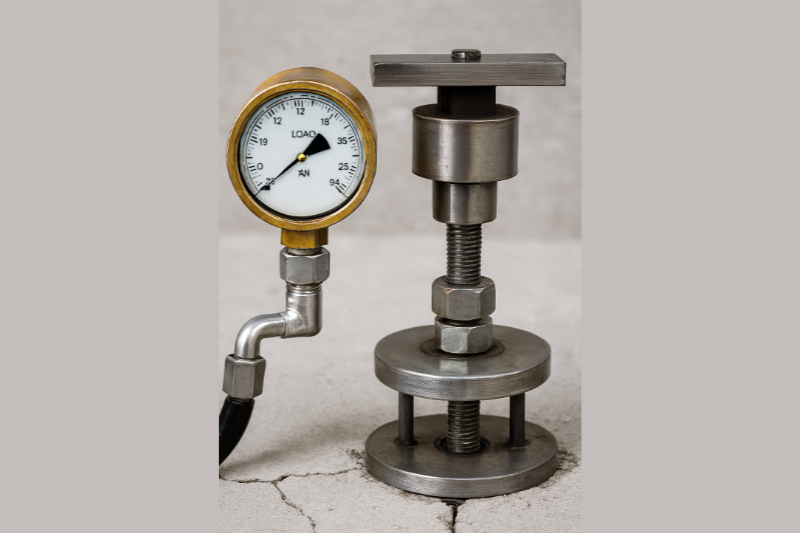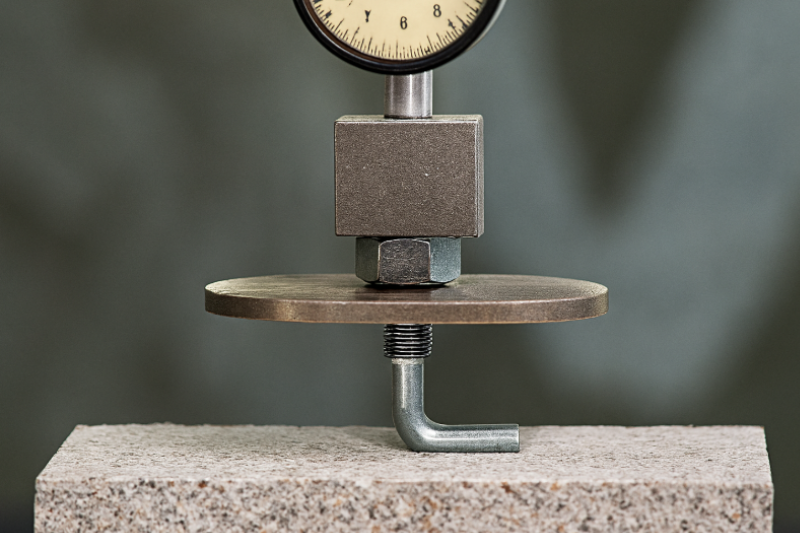What is Pull Out Test & Why It's Important?
What is Pull Out Test
A Pull Out Test is a quality-control method used to measure the force required to extract an anchor, fastener or embedded insert from its base material. It verifies installation quality, substrate strength and safety compliance, and is widely used in construction, metal fabrication, CNC machining, 3D printing and plastic molding.
It checks:
- How well the anchor is seated.
- How strong the substrate (concrete, metal, plastic, etc.) is.
- Whether the installation will meet design or safety loads.
Purpose of a Pull-Out Test
Pull out tests serve several vital purposes in fabrication, construction, and product manufacturing:
- Safety assurance and compliance: Especially for structural anchors, façade systems, or safety fixtures (e.g. anchor points for fall protection).
- Material / substrate validation: To verify concrete, steel, or plastic strength where anchors are installed.
- Verifying installation quality: Ensures that anchors or insertions are properly embedded, torque applied, no voids, etc.
- Design validation and certification: Useful in research, engineering design, and for regulatory or project-spec compliance.
In Singapore, pull-out tests are relevant to services like steel fabrication, sheet metal fabrication, aluminium sheet fabrication, CNC Machining, and also when using inserts in plastic injection molding or 3D printing (SLA / FDM) for threaded parts.

Pull Out Test vs Pull Off Test
A Pull Out Test measures the tensile force required to extract an anchor, fastener, or insert from a base material, while a Pull Off Test measures the adhesion strength of a coating, adhesive, or layer bonded to a surface. In short, pull out = anchors; pull off = coatings or bonding.
| Aspect | Savings | Savings |
|---|---|---|
| Measures | Force to extract fastener/anchor/insert from substrate | Adhesion strength of coatings, adhesives or layers from substrate |
| Standards / Methods | ASTM C900 (hardened concrete), ASTM D4435 (rock or ground anchors), project or engineering codes | ISO 4624:2023; ASTM D4541; EN/ISO coating adhesion methods |
| Typical failures | Pull-out of anchor, substrate failure around anchor | Coating/coating-substrate bond failure, cohesive or adhesive failure in coating layer |
| Examples in Singapore context | Anchor bolts in metal fabrication, facade anchors, anchor point pull tests | Pull-off test for internal wall tiles under CONQUAS, coatings on steel or concrete parts |
Standards like ISO 4624 deal with pull-off adhesion; standards like ASTM C900 and ASTM D4435 deal with pullout strength in hardened concrete or anchor systems.
When selecting steel for flooring or fabrication, see our breakdown of chequered plate and plain steel plate to understand their strengths and uses
Pull-Out Test Requirements Singapore
In Singapore, pull out tests must follow project specifications and relevant standards such as ASTM C900 for anchors or ISO 4624 for coatings. They are often required by the Building and Construction Authority (BCA) for public works, CONQUAS assessments, and safety-critical anchors, and must be supervised by a Qualified Person or an accredited laboratory.
Moreover, reporting and documentation must include test standard used, substrate material, environmental conditions, embedment depth or coating thickness, test machine calibration, mode of failure, load applied.
Pull Out Test Equipment
Here are equipment and best practices to ensure reliable, repeatable testing:
- Use hydraulic/mechanical pull testers with traceable calibration (load cell or proving ring).
- Ensure fixtures / adapters match anchor type and are rigid.
- For coatings, use correct adhesive, dollies, cure times, and maintain environmental conditions (temperature, humidity).
- Check embedment depth, anchor diameter, substrate strength.
- Apply tensile load at a controlled rate (per standard) to avoid sudden failure that does not reflect real load conditions.
- Inspect and document the nature of failure: anchor pull-out, substrate cracking, adhesive failure, cohesive in coating etc.
Why Pull-Out Test is Important?
A Pull Out Test is important because it verifies the strength, safety, and reliability of anchors, fasteners, and inserts in their actual substrate. It ensures installations meet design loads, comply with Singapore regulations, prevent failures, and improve quality control in construction, metal fabrication, 3D printing and plastic molding projects.
Conclusion
Pull out testing plays a critical role in ensuring the reliability, safety, and compliance of anchors, fasteners, coatings, and inserts used across Singapore’s fabrication and construction industries. By applying the correct standards, using calibrated equipment, and working with qualified professionals, projects can achieve higher quality, reduce risk, and meet regulatory expectations.
At The Monster Builder, we see pull out testing as part of a larger commitment to precision and reliability. Whether it’s CNC machining, sheet-metal fabrication, 3D printing, or plastic injection molding, our goal is to help clients achieve designs that are technically sound and built to last, backed by clear, measurable data at every stage.



